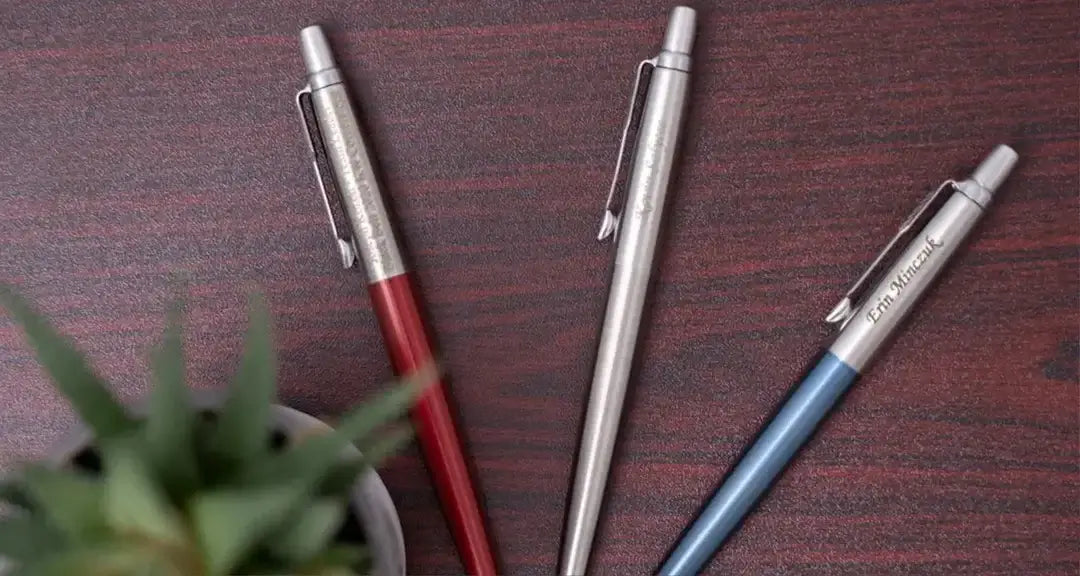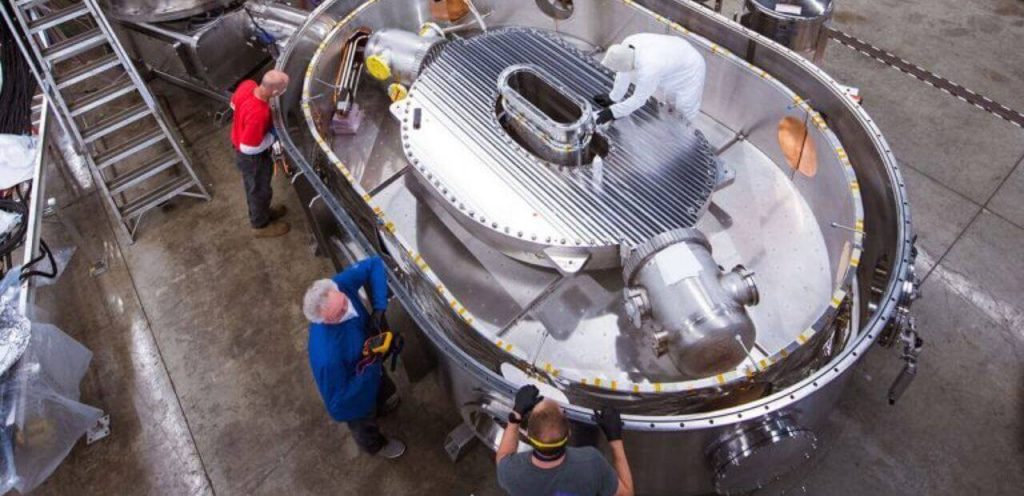The Institute of Leather Engineering and Technology (ILET) at the University of Dhaka offers the best Diploma in Leather Technology in Bangladesh. This program provides comprehensive industry-focused education and training.
Embarking on a career in the evolving field of leather technology requires a solid educational foundation, and the Diploma in Leather Technology at ILET is designed to meet this need. Located within the prestigious University of Dhaka, this institute stands as the premier destination for aspiring leather technologists, offering cutting-edge facilities and an updated curriculum that aligns with global industry standards.
With a focus on both theoretical knowledge and practical skills, the diploma ensures students are well-prepared to tackle the challenges of leather processing, product design, and production management. Graduates of this program find themselves well-equipped for a competitive job market, benefiting from the rich heritage and contemporary practices taught by experienced faculty. Engaging in this diploma paves the way for a fruitful career in both local and international leather sectors, making it a sought-after program for students aiming to excel in this specialized industry.
Introduction To Leather Technology Education
Rising Demand For Skilled Leather Technologists
The leather sector is booming. It needs qualified professionals now more than ever.- Global fashion markets need leather goods.
- Industrial growth boosts employment.
- Higher education in leather is key.
Role Of Leather Technology In Bangladesh’s Economy
Leather contributes significantly to national income.- It’s a major export product.
- Thousands of people find jobs in this sector.
Criteria For Selecting Top Leather Technology Programs
Finding the best Diploma in Leather Technology in Bangladesh requires careful consideration of various factors. A diploma that blends academic rigor with industry exposure prepares students for real-world challenges. Let’s explore what makes a leather technology program stand out from the rest.
Academic Excellence And Curriculum
The core of every top-notch diploma program lies in its academic excellence. A strong curriculum equips students with comprehensive leather technology know-how. Here are key elements to look for:
- Expert faculty with a deep understanding of the leather industry
- Modern syllabus that covers latest industry practices
- Hands-on training for practical skills development
- Research opportunities to innovate
The program should foster critical thinking and problem-solving skills. Focus on a diploma that ensures both theoretical knowledge and practical application.
Industry Links And Partnerships
Connections with the leather industry are a diploma’s lifeline. They offer a window into the working world of leather technology. Features of beneficial industry partnerships include:
- Internships for real work experience
- Guest lectures from industry professionals
- Collaborative projects with companies
- Job placements after completion
A diploma with strong ties to the leather sector can kickstart your career. It provides invaluable networking opportunities and exposure to current practices.
Historical Perspective Of Leather Education In Bangladesh
The journey of leather education in Bangladesh spans over several decades. This history enriches the industry’s foundation and growth. Bangladesh’s reputation in the global leather market began with proficient training and education in leather technology.
Evolution Of The Leather Industry
The leather sector in Bangladesh flourished from the early tanneries. These tanneries paved the way for a booming industry. International demands grew over the years. Bangladeshi leather became a key export product.
| Year | Milestone |
|---|---|
| 1960s | Establishment of small tanneries |
| 1980s | Growth of export markets |
| 2000s | Modernization and compliance measures |
The industry’s evolution demanded skilled manpower. The education system responded accordingly.
The Inception Of Leather Technology Education
Bangladesh’s first leather technology program emerged to meet the industry’s needs. Institutions set up diploma courses. They aimed to build a skilled workforce. This initiative marked the beginning of systematic leather education in the country.
- 1969: College of Leather Technology was established.
- 1978: Offered first Diploma in Leather Technology.
Gone are the days of traditional leather crafting. Today, Bangladesh prides itself on a skilled youth driving the leather sector. Institutions across the country offer comprehensive leather technology programs. Is your career goal to be part of this vibrant industry? A Diploma in Leather Technology may be your first step towards success.
Pioneering Institutions For Leather Technology
Dhaka’s Premier Leather Technology Institute
At the heart of Bangladesh’s capital, Dhaka’s premier institute offers a comprehensive Diploma in Leather Technology. Students learn through modern labs and experienced teachers. Courses cover a range of topics:- Leather Processing
- Design and Product Development
- Quality Control
Chittagong’s Contribution To Leather Education
In Chittagong, another institution shines in leather education. It offers intensive training and state-of-the-art facilities. Courses include:- Fundamentals of Tanning
- Leather Goods Production
- Environmental Aspects of Leather
| Feature | Dhaka Institute | Chittagong Institute |
|---|---|---|
| Educational Approach | Practical and Theoretical | Intensive Training |
| Facilities | Modern Labs | State-of-the-Art |
| Industry Linkage | Strong | Global Focus |
Emerging Leather Technology Programs
Innovative Programs And Modern Techniques
Bangladesh is home to cutting-edge diploma programs in leather technology. These courses combine traditional skills with advanced technologies, preparing students for the global market.- Computer-Aided Design (CAD) for precision in leather goods manufacturing.
- Leather Processing Technology that reduces waste and increases efficiency.
- Quality Control and Assurance to meet international standards.
Focus On Sustainable Practices
In an industry often criticized for its environmental impact, Bangladesh is stepping up. Universities are embedding sustainability into their leather technology diplomas.| Course Component | Description |
|---|---|
| Eco-friendly Tanning Methods | Reducing chemicals in the tanning process. |
| Waste Management | Reprocessing scraps and effluents for other uses. |
| Renewable Energy Use | Incorporation of solar and bio-energy in production. |

Credit: www.skyart.com
Faculty And Mentorship In Leather Education
Distinguished Faculty Profiles
Renowned educators lead the Diploma in Leather Technology. These expert academicians and industry professionals bring real-world experiences into the classroom.- Prof. Dr. Md. Abdul Momen – A leader in leather chemistry with 20+ years of experience.
- Dr. Sharmin Akter – Specializes in environmental aspects of leather production.
- Engr. Khaled Mahmud – Industry veteran with insights into modern tanning processes.
Mentorship Opportunities And Industry Guidance
Students have access to mentorship programs that provide valuable insights and industry connections. Regular seminars and workshops enhance practical learning.| Program | Benefits | Industry Partner |
|---|---|---|
| Internships | Hands-on experience in renowned tanneries\ | Bata, Apex |
| Industry Projects | Collaborative work on real-world challenges | Leatherex, Bay Footwear |
| Networking Events | Interactions with leather industry leaders | LFMEAB, BBSC |
Campus Facilities And Resources
State-of-the-art Laboratories
Empowering students with practical skills, the laboratories at the campus are a highlight. They are equipped with modern machinery and tools that mirror the real-world leather industry. The labs are designed for various specializations:- Tanning Technology Lab
- Footwear Design Lab
- Leather Goods Lab
Libraries And Research Support
To complement the practical training, the campus hosts a well-stocked library. It’s a treasure trove of information, with:- Latest journals and publications in Leather Technology
- Research papers by industry experts
- Access to online databases and e-resources
Student Life And Extracurricular Activities
Clubs And Societies Related To Leather Technology
Student clubs often ignite the spark of innovation and camaraderie.- Leather Innovators Club: A hub where creativity meets practicality.
- Leather Tech Forum: Debates and discussions flourish here.
- Eco-Leather Club: Sustainability is the prime focus.
Networking And Career Fairs
Networking events and career fairs are vital for aspiring professionals.| Event Type | Description | Frequency |
|---|---|---|
| Industry Meetups | Face-to-face interaction with industry leaders | Quarterly |
| Career Expos | Gateway to job opportunities and internships | Biannual |
| Alumni Talks | Insights from successful graduates | Monthly |
Alumni Success Stories
Graduate Career Paths In The Leather Sector
- Product Development Managers: Leading design and creation of new leather goods.
- Quality Assurance Engineers: Ensuring excellence in leather production processes.
- Project Leaders: Pioneering innovations in sustainable practices.
Alumni have ventured into diverse roles, making significant contributions to the leather sector, as depicted in the table below:
| Position | Company |
|---|---|
| Technical Advisor | EcoLeather Corp |
| Operations Manager | Luxe Leather Ltd. |
| Research Analyst | Innovative Leather Labs |
Alumni Contributions To The Industry
Graduates have made their mark by:
- Implementing Eco-friendly Techniques: Reducing the environmental impact of leather production.
- Advancing Leather Science: Enhancing the quality and durability of leather products.
- Empowering Local Communities: Creating job opportunities within the industry.

Credit: www.dayspringpens.com
Internships And Real-world Experience
Collaborations With Leather Companies
Central to the diploma’s success is its partnerships with prominent leather companies. These alliances provide students with exclusive insights into the industry. They also pave the way for valuable internships that often lead to employment.- Access to modern leather processing units
- Interactions with industry experts
- Opportunities for job placements
Hands-on Training And Skill Development
Practical exposure is at the heart of the program. Students receive hands-on training to master their craft. They work on real projects, ironing out challenges and honing their problem-solving abilities.- Workshops on leather goods production
- Projects that simulate real-world scenarios
- Skill-building exercises tailored for the leather sector
Scholarships And Financial Aid
Funding For Deserving Students
Bright students deserve opportunities. Some don’t have enough money. Schools and organizations want to help. They offer scholarships:- Merit-based scholarships: Rewards for top students.
- Need-based grants: Help for those who need it.
- Waivers: Some fees might not need paying.
Aid From Industry Partners
Companies also support students. They know fresh talent is necessary. They offer:- Internship programs: Work and learn.
- Sponsorships: Direct support for your studies.
- Equipment donations: Free tools and materials.
Admissions Process And Requirements
Entrance Examinations And Eligibility
To gain admission, applicants must pass entrance exams. These assess academic readiness and aptitude in relevant subjects. Eligibility criteria typically include:- Completion of secondary education
- Minimum GPA scores in major subjects
- Pass marks in entrance tests
Application Tips And Strategies
Submitting a standout application is crucial for success. Follow these strategies:- Understand all requirements before applying.
- Gather all necessary documents early.
- Check for deadlines and adhere strictly to them.
- Practice past papers to improve test performance.
- Ensure all details in the application are accurate.
Curriculum Highlights
Key Subjects And Modules
- Leather Processing: Fundamental principles of tanning and finishing.
- Leather Goods Design: Crafting and design techniques for fashion goods.
- Chemistry of Leather Production: Chemical processes for leather making.
- Environmental Aspects: Sustainability and waste management in leather technology.
- Quality Control: Ensuring high standards in leather production.
- Footwear Manufacturing: Process of crafting shoes and related goods.
Innovation In Teaching Methods
This program incorporates interactive learning including:- Project-Based Learning: Engaging in real-life projects for practical skill application.
- Industry Visits: Experiential tours to top leather processing units.
- Guest Lectures: Insights from industry experts on emerging trends.
- Lab Work and Simulations: State-of-the-art labs for testing and prototyping.
Partnerships With Global Leather Institutions
International Exchange Programs
Bangladesh’s leather technology students benefit greatly from international exchange programs. These initiatives provide them with unique opportunities to:- Study abroad at prestigious leather institutes
- Experience different cultures, contributing to personal growth
- Acquire global industry insights by interacting with international experts
Collaborative Research Projects
Engagement in collaborative research projects is a cornerstone of the partnership. Students and faculty from Bangladesh join forces with their global counterparts to:- Explore cutting-edge technologies in leather production
- Tackle industry challenges with innovative solutions
- Create sustainable practices that benefit the global market
Pathways After Graduation
Employment Opportunities In Bangladesh And Abroad
The leather industry is booming in Bangladesh, creating a high demand for skilled professionals. Diploma holders can explore numerous roles:- Leather Product Designers to craft innovative designs
- Quality Control Managers ensuring products meet standards
- Production Supervisors overseeing manufacturing processes
- Marketing Executives selling leather products far and wide
Higher Studies And Research Opportunities
For those with a fervor for academia, higher studies can be a fruitful pursuit. Various universities offer advanced degrees in related fields:- Masters in Leather Engineering to deepen expertise
- MBA in Leather Management for a business edge
- PhD Programs to contribute to leather technology research
Examining The Job Market For Leather Technologists
Emerging Trends In Leather Technology Employment
Several trends shape the job landscape for Leather Technologists. Green technology and sustainable practices are leading the way. Companies seek experts who can innovate within these areas.- Eco-friendly production is gaining traction.
- Automation in leather processing demands technical know-how.
- Design and product development roles are becoming more specialized.
Demand For Specialized Skills
In Bangladesh, the leather industry values specialized skills. Employers look for candidates with specific expertise to stay competitive.| Specialized Skill | Industry Need |
|---|---|
| Quality Control | High |
| Tannery Technology | High |
| Environmental Management | Rising |
- Tanneries for processing raw hides.
- Footwear companies focus on design and production.
- Leather goods manufacturers need expert craftsmanship.
Role Of Government And Policy Support
Government Initiatives For The Leather Sector
Bangladesh’s government understands the leather sector’s potential. Hence, they have rolled out numerous initiatives. These efforts improve industry standards and boost global competitiveness. Below are key government actions:- Leather Industry Park: A dedicated zone for leather businesses.
- Export incentives: Financial rewards for meeting export targets.
- Training programs: Skill development initiatives for workers.
Educational Grants And Subsidies
Educational support is vital for a skilled workforce. To this end, the government provides:| Type of Support | Description |
|---|---|
| Scholarships: | Financial aid for leather technology students. |
| Subsidies: | Reduced costs for diploma courses in leather technology. |
| Research Grants: | Funding for leather industry-related research. |
Challenges And Future Prospects
Overcoming Industry Hurdles
Diploma holders in Leather Technology often face hurdles after graduation. These include outdated curriculum, limited research opportunities, and stiff competition from global markets. But with the right strategies and support, overcoming these challenges is within grasp. Key strategies include:- Continuous Learning: Staying abreast of the latest industry developments is essential.
- Innovation: Encouraging creative thinking can lead to novel solutions and products.
- Collaboration: Partnerships between institutes and industries can provide practical exposure.
Predictions For Leather Technology Education
The future of education in Leather Technology looks promising. Anticipations for growth are high, and tech integration is on the rise. This can reshape how education is delivered and applied. Future trends may include:- E-Learning Platforms: Digital classrooms can bridge gaps in learning.
- Sustainability Focus: Eco-friendly practices will likely become an integral part of the curriculum.
- Industry 4.0: Automation and data science could redefine traditional methodologies.
Leveraging Technology In Leather Education
Incorporating Digital Tools In The Curriculum
Today’s leather technology education is nothing without the use of digital tools. Educators integrate software that reflects industry standards. This approach equips students with practical skills. They learn to design patterns, analyze materials, and manage production using advanced software. Embracing these tools means graduates hit the ground running in their future careers.- 3D Modeling Software: Students create detailed leather product designs before production.
- Resource Management Tools: Future technicians plan and track resources efficiently.
- Quality Control Systems: Learners use technology to ensure product excellence.
E-learning Platforms And Remote Access
Studying leather technology is now more flexible than ever. E-learning platforms make education accessible from anywhere. This is crucial for students who cannot attend traditional classes. Remote access to lectures, resources, and collaborative tools opens doors for all. Here are some key benefits:| Benefit | Description |
|---|---|
| 24/7 Accessibility | Learners access course materials at any time. |
| Interactive Learning | Interactive modules make learning dynamic. |
| Global Collaboration | Students connect with peers worldwide. |

Credit: www.hindustantimes.com
Conclusion: Making An Informed Decision
Why Leather Technology Matters Today
Leather is everywhere; from fashion to furniture, it’s a staple. Bangladesh’s economy benefits from this industry. Knowledge of leather technology ensures you play a part in this vital sector. With skills gained, you help meet global leather demand and drive innovation.Final Thoughts For Prospective Students
As a prospective student, understand the industry’s growth. A diploma in leather technology offers diverse opportunities. Get ready for a dynamic field where creativity meets utility. Think about the curriculum, resources, and connections offered. The right program equips you with skills for the future. Choose a program that aligns with your career goals. Consider the college’s reputation and how employers view its graduates. Ensure the institution boasts modern facilities. It should foster practical learning through industry exposure. The right education propels you into a thriving career in leather technology.Frequently Asked Questions For Best Diploma In Leather Technology In Bangladesh
What Is The Scope Of Leather?
The scope of leather spans fashion, upholstery, accessories, automotive interiors, and industrial uses due to its durability and aesthetic appeal.
What Is Leather Technology?
Leather technology involves the processing of raw hides and skins into finished leather. This includes tanning, dyeing, and finishing techniques to create durable, versatile materials for various products.
What Is The Meaning Of Leather Engineering?
Leather engineering refers to the study and practice of transforming raw hides into durable, finished leather products through various chemical and mechanical processes.
What Is A Diploma In Leather Technology?
A Diploma in Leather Technology is a specialized program focusing on leather processing, technology, and manufacturing targeted towards industry-specific skills and knowledge.
Where To Study Leather Technology In Bangladesh?
In Bangladesh, the Institute of Leather Engineering and Technology at the University of Dhaka is known for offering quality education in Leather Technology.
Duration Of Leather Technology Diploma?
Typically, a Diploma in Leather Technology spans over a 2-year period, which includes both theoretical and practical training.
Conclusion
Embarking on a career in leather technology can set you on a path to success. Bangladesh offers top-tier diploma programs that stand out for their quality and industry relevance. Graduates are well-equipped to thrive in this growing sector. Opting for a distinguished diploma in leather technology here could be your best academic investment.
Choose wisely and shape a future in this exciting field.









